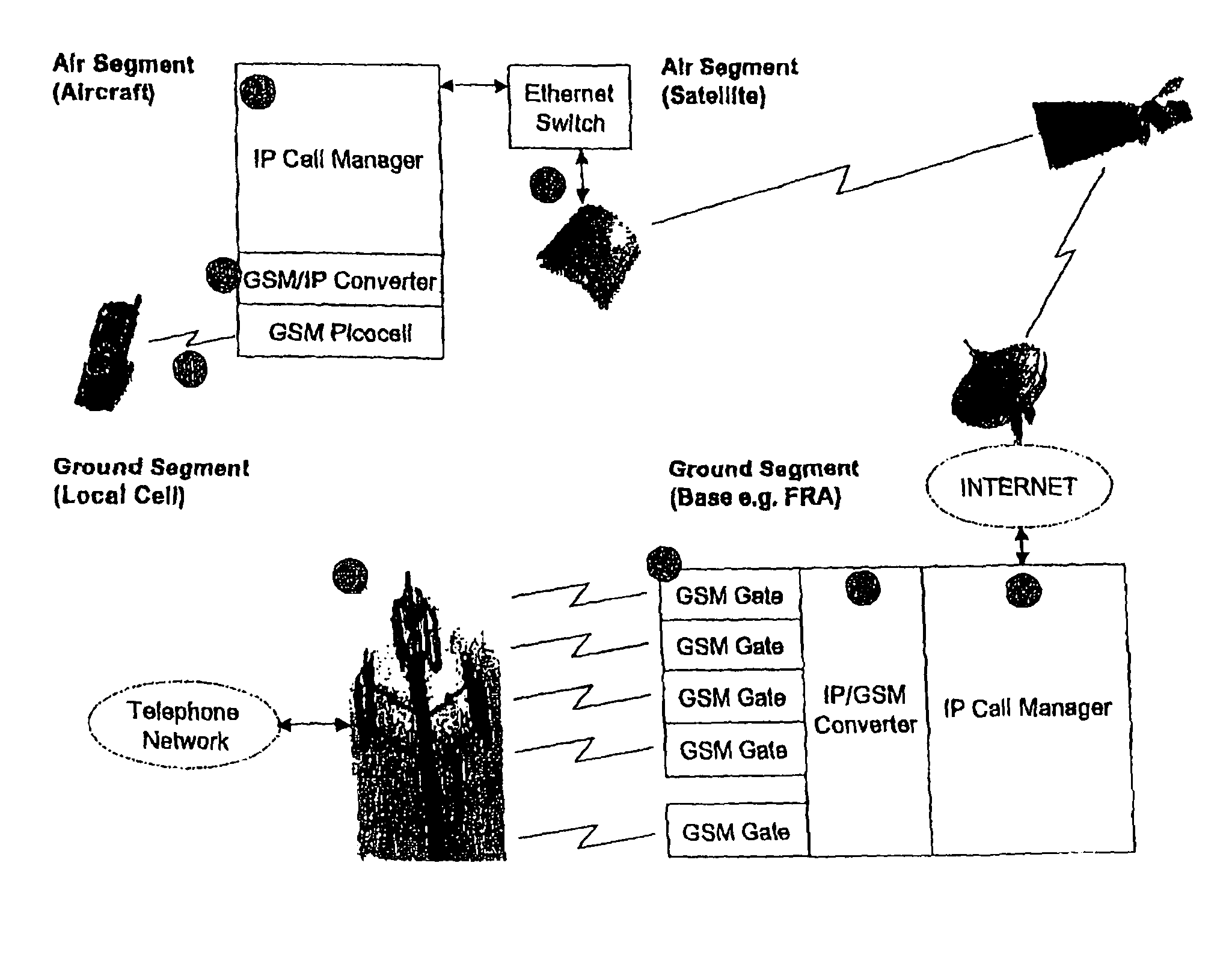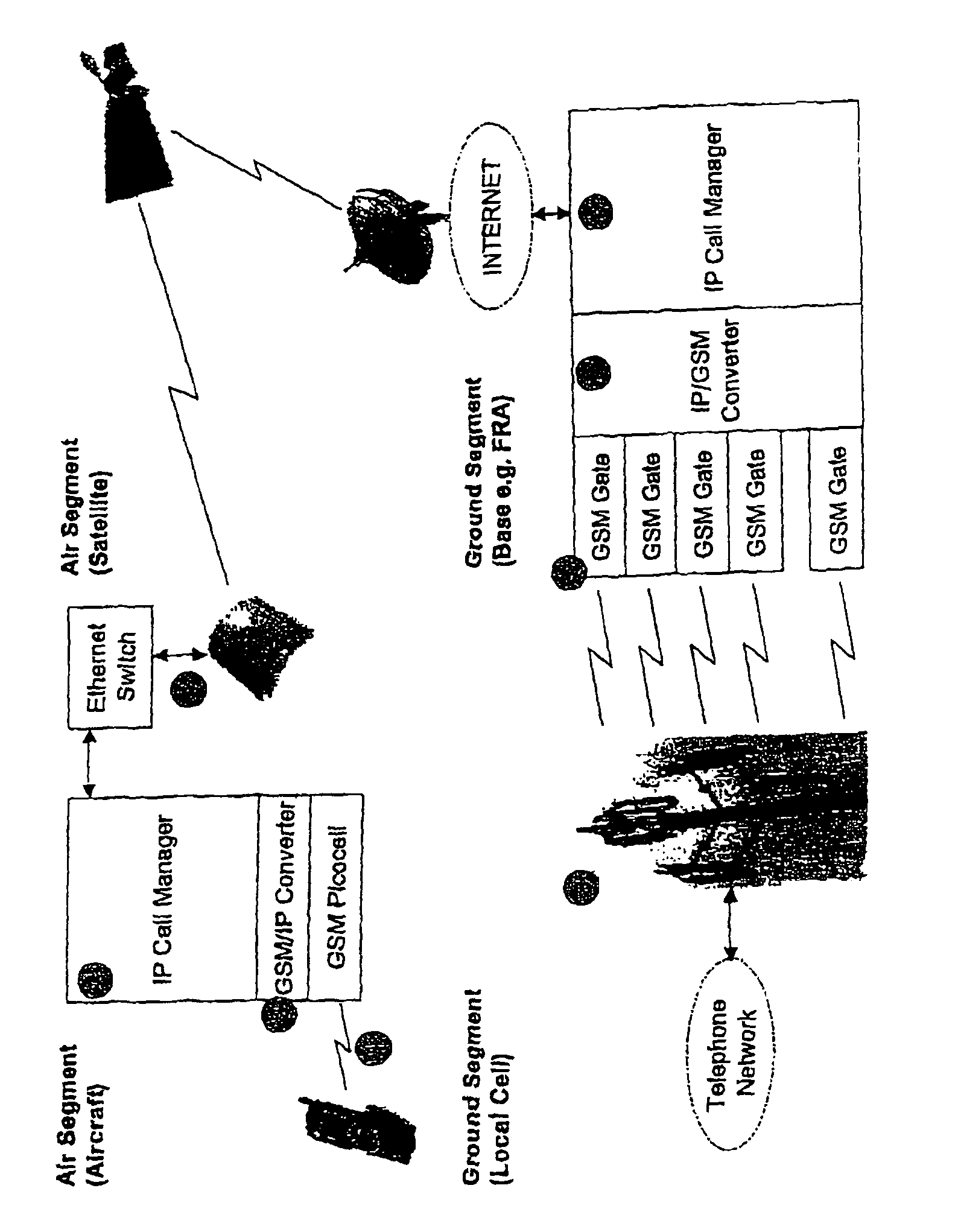System and method for using a cellular telephone in a mobile vehicle
a mobile vehicle and cellular telephone technology, applied in the field of system and method for using a cellular telephone in a mobile vehicle, can solve the problems of not being able to use a cellular phone in the aircraft, not being able to connect to the electronic on-board system, and not being able to communicate with passengers. the effect of simple communication
- Summary
- Abstract
- Description
- Claims
- Application Information
AI Technical Summary
Benefits of technology
Problems solved by technology
Method used
Image
Examples
Embodiment Construction
[0033]On board an aircraft, a GSM base station 1 is arranged which forms a GSM pico cell. The base station 1 is connected via the on-board intranet to a GSM / IP converter 2 which converts the GSM data into IP data and conversely. An IP call manager 3 feeds the IP telephony data into the intranet or ethernet of the aircraft and takes the corresponding received IP telephony data from the network, respectively. The connection to a ground station is established via a satellite via an on-board antenna indicated at 4. The transmitting / receiving station on the ground is connected via the Internet to an IP call manager 5 which, as it were, filters the corresponding IP data out of the Internet and converts them back into GSM data via an IP / GSM converter 6. The IP / GSM converter 6 is connected to GSM gateways 7 which establish the connection to the stationary mobile radio network 8. The sequence described is correspondingly reversed for GSM data which are sent from the stationary mobile radio n...
PUM
 Login to View More
Login to View More Abstract
Description
Claims
Application Information
 Login to View More
Login to View More - R&D
- Intellectual Property
- Life Sciences
- Materials
- Tech Scout
- Unparalleled Data Quality
- Higher Quality Content
- 60% Fewer Hallucinations
Browse by: Latest US Patents, China's latest patents, Technical Efficacy Thesaurus, Application Domain, Technology Topic, Popular Technical Reports.
© 2025 PatSnap. All rights reserved.Legal|Privacy policy|Modern Slavery Act Transparency Statement|Sitemap|About US| Contact US: help@patsnap.com


